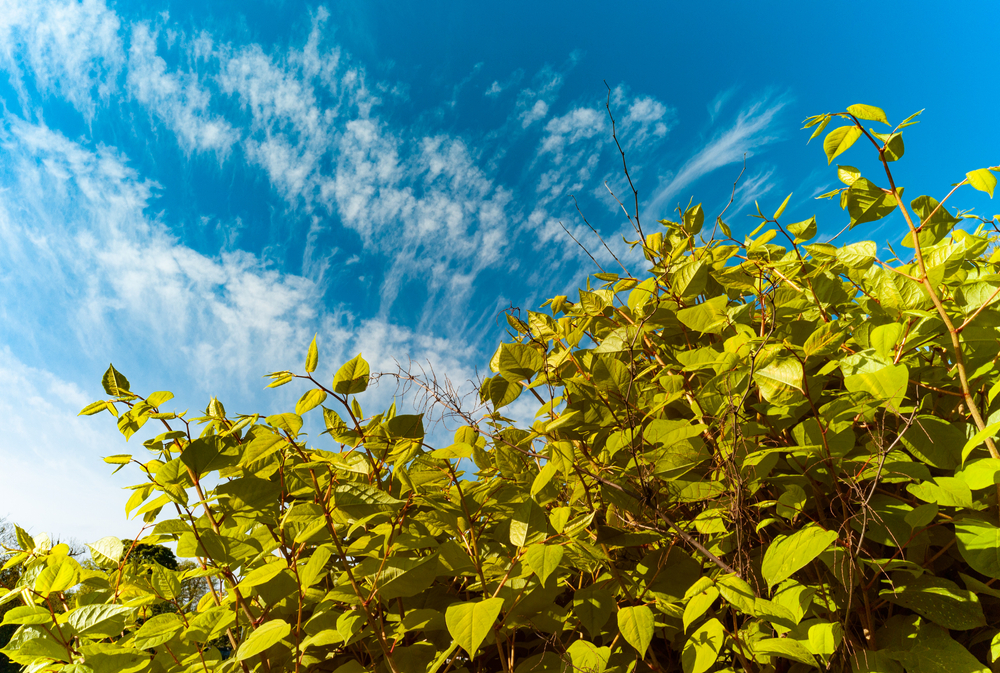Let’s take a look at invasive species in this blog post. This is an environmental topic that I have been interested in for a long while. I have just never gotten around to writing a blog post about it. There are so many things to write blog posts about! We will look at the problem and the legislation in the UK surrounding it from a company perspective.
Introduction
An invasive species is an organism that has been introduced to a country. Generally such organisms become common and cause harm in some way to the environment and or people directly. Obviously, what is invasive in a country will vary. An invasive species in one country will be a natural species in another. Invasive species will differ from introduced species, which tend to have no or even sometimes an advantageous impact. Invasive species can cause a threat to native wildlife from predation, competition for resources, the introduction of new diseases and hybridisation.
 Japanese Knotweed
Japanese Knotweed
The impact of invasive species can be significant. Take the example of Japanese Knotweed (Fallopia japonica). This was introduced into the UK from Japan, where it is a rare species, in 1886 in Maesteg in Wales. The plant was introduced as an ornamental garden plant and is a type of bamboo. It has now spread to just about everywhere in the UK. Take a look at the current extent of the spread of the species HERE.
Japanese knotweed causes numerous problems, outside of where it lives naturally. It has no known natural predators, which means there is nothing to stop it from spreading at a rapid pace and the plant thrives, often growing to about 3 metres high and blanketing an area stopping native plants and animals from existing. In a similar way to other woody plants it can also cause extensive damage to drains, paving, houses and tarmac. Only a very small part of the root of about 1 cm can cause another plant to grow. A truly amazing plant in some ways! The plant can be controlled but it can be difficult. The most common way is through the application of strong pesticides over a long time period, usually about three years. Another option is to dig up and bury the dead knotweed canes to a depth of between 2 and 5 metres.
 Himalayan Balsam
Himalayan Balsam
Another invasive plant is Himalayan Balsam (Impatiens glandulifera), this is a pretty looking plant that is a form of foxglove. I remember this one from growing up on a small farm in Lancashire. Himalayan Balsam can grow to around 2.5m in height and the stems are soft and very moist. It spreads its seeds by ‘flicking them’ when agitated slightly. It prefers moist and damp places such as on river banks or at the side of footpaths. Although perhaps not quite as damaging as Japanese Knotweed it can cause a major weed problem invading gardens, river banks and waste land quickly.
 UK invasive Species law
UK invasive Species law
The Wildlife and Countryside Act 1981 makes it an offence to allow listed invasive species and those that are not listed and constitute a known threat to spread. These include the two plants above but also numerous others such as Zander (Stizostedion lucioperca), Grey squirrel (Sciurus carolinensis), and European pond terrapin (Emys orbicularis) etc. Therefore, from an environmental practitioner’s perspective if you find invasive species on your site you must implement a management plan to not allow it to spread.
The Invasive Alien Species (Enforcement and Permitting) Order 2019 means that you need a licence to keep, grow, cultivate, allow to breed and release into the environment live specimens of invasive species that are listed in Regulation 1143/2014.
Under the Environmental Protection Act 1990 Section 34 there is also a duty of care for storing and disposing of invasive species as there is any other controlled waste. The duties that you must comply with can be found on a blog post I wrote on the topic.
Final Note
Invasive species can cause significant environmental and economic damage. As we have seen above it is important that you identify such species, control and eradicate them and ensure that you are legally compliant.
John Binns BSc (Hons), MSc, MIEMA

With over 19 years’ experience working in environment management, John Binns BSc (Hons) MSc MIEMA is an experienced environmental tutor and consultant with knowledge of health and safety management.
